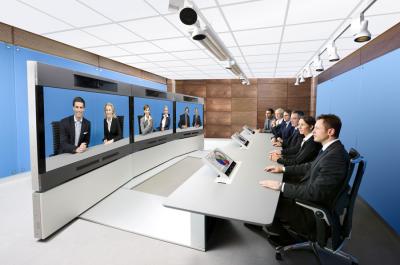Enterprises Tune Into Video Conferencing

More and more enterprises are turning to video conferencing in an effort to drive down costs and improve their corporate communications, a new survey has found
The use of video conferencing within businesses is on the rise, with staff increasingly using video in order to communicate with their colleagues, partners and customers, according to a survey released on 3 February.
In a survey of 1,200 senior business professionals conducted by Research Now for IP communications company Global IP Solutions, the majority said they have used a video conferencing application. Eighty percent of those surveyed in China said they had used such an application, while about 60 each in the United States and South Korea said they had.
Almost 47 percent of those surveyed in Japan said they had used such an application.
In the United States, 40 percent of those surveyed said their companies will be deploying a video communication solution within the next six months to two years, according to the survey. About 80 percent of those polled in China said their companies were planning deployments within the next 18 months.
“The results of this survey underscore the increasing value of video in business communication,” Joyce Kim, chief marketing officer at GIPS, said in a statement.
It also is evidence supporting the strategies of such vendors as Cisco Systems, which is making huge investments in its video communications capabilities. Cisco CEO John Chambers has said video will change the way companies do business, and has pointed to his own company as an example. Cisco is increasingly relying on video conferencing and telepresence technologies for everything from internal meetings among far-flung employees to releasing corporate news to the outside world.
A host of other vendors also are making a push into the space, from Polycom partnering with the likes of Juniper Networks and Siemens Enterprise Communications Group to Logitech acquiring LifeSize Communications.
UC (unified communications) vendor Radvision announced 3 February that it had bought a portion of Aethra’s high-definition video conferencing endpoint business.
According to GIPS’ survey, 79 percent of those polled who use video conferencing rely on consumer applications such as Yahoo, Google’s Gmail, AOL and Skype. Another 21 percent use video conferencing systems from such vendors as Cisco and Polycom.

The respondents said the biggest reasons for using video conferencing technologies were to drive down travel expenses and improve the clarity of their business communications and understanding.
They also said the technology helps build relationships and enables users to pick up subtle cues that might otherwise be missed in phone calls or emails.
Vendors will have to improve the performance of their products to keep the momentum going. About 61 percent of respondents said video delay and video freezing were their primary concerns regarding the use of video conferencing technologies.
GIPS’ survey echoes the results of other studies that are finding that enterprises are increasingly turning to new communications technologies, including UC, VoIP (Voice over IP) and telepresence, to improve their collaboration capabilities, improve production and reduce costs in such areas as travel.